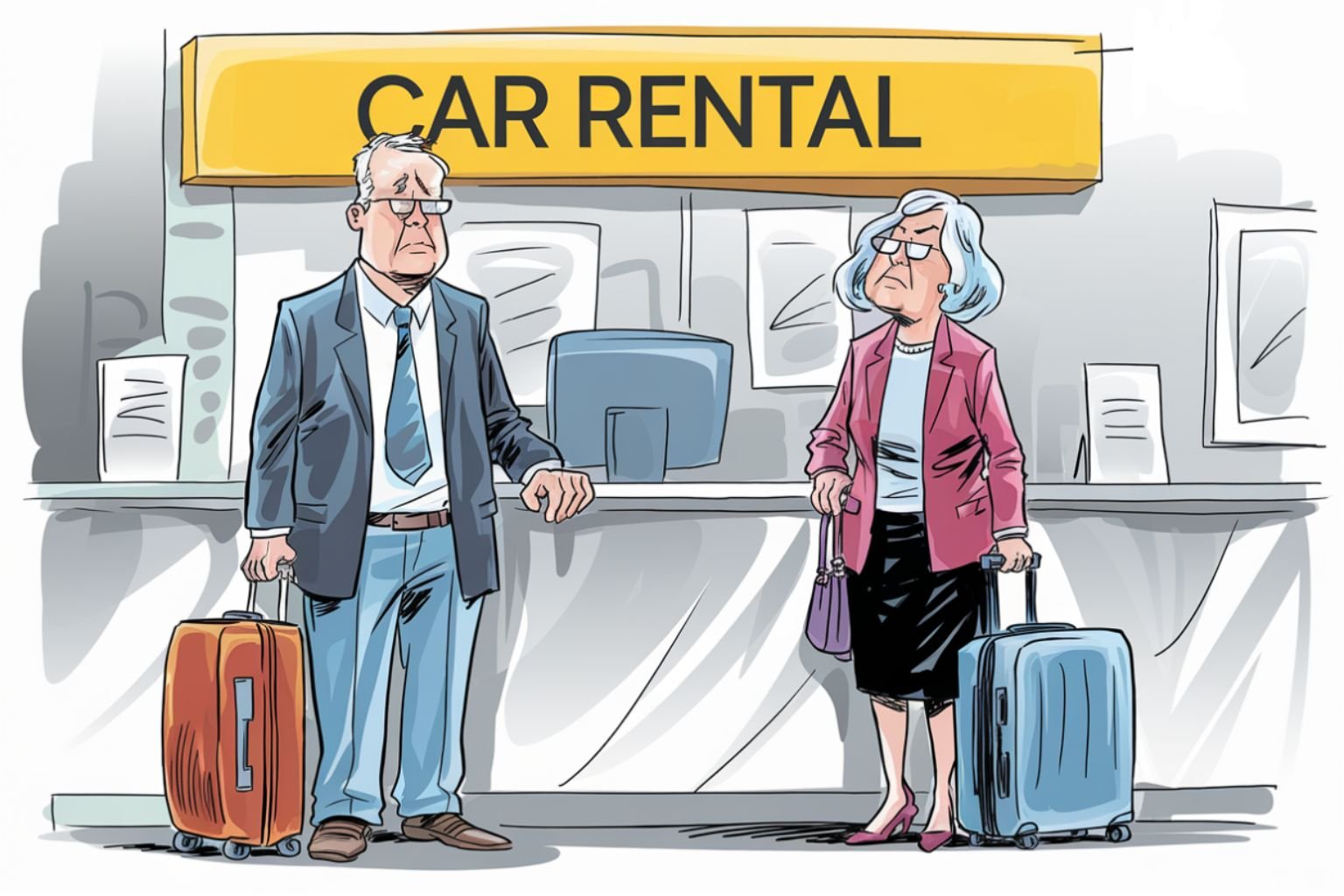In this case
- A merchant issues a $286 refund to Alejandro Soler’s PayPal account for returned bike accessories.
- PayPal says it transferred the money to his Chase credit card, but Chase claims it never arrived.
- After a year of being treated like a “Ping-Pong ball” between the two financial giants, Soler wants to know where his money is.
If you’ve ever had to go toe to toe with a big company over a missing refund, then you’ll relate to Alejandro Soler’s agonizing problem with PayPal and Chase.
A year ago, PayPal issued a $286 refund to his Chase credit card. He never got it.
“At this point, I’m stuck between two giants that treat me like a Ping-Pong ball,” he says. “In the meantime, my money is nowhere to be found.”
In the hierarchy of consumer problems, cases like Soler’s are at the top. When a company doesn’t care if you received your refund — well, that’s when you call our advocacy team.
But Soler’s case raises some broader questions:
- What is a trace number?
- How do you find a PayPal transaction number?
- How do you get two companies to talk to each other?
Soler’s refund problem with PayPal and Chase has levels of complexity that will leave your head spinning. But don’t worry, my team and I will hold both those companies accountable for what they’ve done — or haven’t done.
“I never received the money on my credit card”
Let’s get back to Soler’s story. He’d ordered several pro bike accessories through a site called Pro Bike Kit, and paid with his PayPal account.
Last January, he told the business that he wanted to return the items, and it agreed to accept his return. It returned the money to PayPal.
Then PayPal returned it to his credit card — or so it said.
“Unfortunately, I never received the money on my credit card,” he says.
So he started making inquiries.
“Between February and July, I contacted both PayPal and Chase multiple times,” he recalls. “PayPal said Chase had accepted the refund. Chase said they never received anything from PayPal.”
Soler tried to escalate his case to a higher level, but he received no response. (Here’s our guide to contacting the CEO.)

Have you ever been caught in a “corporate Ping-Pong” match, bounced between two companies that both deny responsibility? Tell us your story.
When a refund disappears between two financial institutions, who should ultimately be responsible for finding it and making the customer whole?
What is your best strategy for getting two companies to talk to each other to resolve a problem? Share your advice in the comments below.
Time to call the cops
In August, Soler filed a complaint against Chase with the Consumer Financial Protection Bureau.
Two months later, Chase responded that he needed to “work with PayPal to resolve this.”
So Soler filed a complaint against PayPal.
PayPal responded less than two weeks later, reiterating that it had successfully transferred the funds to Chase.
“I spent the remainder of October and all of November going back and forth multiple times with the executive office from both companies without getting anywhere,” he explains. “I requested evidence from the PayPal system that Chase would be able to accept. Sadly, I got nothing.”
Here’s the crux of the problem: PayPal insists it provided Chase with a trace number that it should have recognized. But Chase said the trace number meant nothing in its system and simply referred him back to PayPal.
Around and around we go. (Related: Unauthorized charges on your PayPal account? Here’s how to get your money back now.)
Soler was ready to give both companies a talking-to.
“I told them that they were treating me like a Ping-Pong ball and that both companies should get on the phone together. But they were not really interested in a joint call. It was clear that I reached the end of the line using my resources,” he says.
And that’s when he contacted my advocacy team.
The first thing we wondered was — what are these trace numbers PayPal is talking about?

What is a trace number?
Generally speaking, a trace number is shorthand for an ACH trace number. It’s a unique 15-digit identifier assigned to each transaction processed through the Automated Clearing House (ACH) Network. This number lets companies monitor incoming and outgoing ACH transfers. It allows financial institutions to track the progress of a transaction and identify its location within the banking system.
Trace numbers can help a business identify the location of its money and ensure the smooth processing of financial transactions. This number is also important for resolving payment disputes, monitoring recurring payments, and tracking the movement of funds within the ACH Network. (Related: This PayPal invoice scam almost got me. Here’s how to spot it.)
But after reviewing Soler’s complaint, our team believes the problem was not with an ACH. PayPal assigns a unique ID, also known as a transaction number, to each purchase.
PayPal uses these 17-digit transaction numbers — much like the ACH trace numbers — to track the status of a payment or to resolve any issues that may arise.
How do you find your PayPal transaction number?
You can find your transaction number by logging in to your PayPal account and go to your transaction history. Click on the “Details” link next to the transaction, and you should see the transaction number listed there.
If the other party has a tracking number, PayPal will list it on this page. (Related: I didn’t make a PayPal donation. So where did my money go?)
PayPal says if you’re having trouble finding your transaction number or tracking information, you can contact the other party and ask them to give it to you.
Bottom line: It looks like PayPal may have confused a transaction number with a trace number. Chase had no idea how to find the money. PayPal said the money is easily found. But neither company would talk to the other.
How do you get two companies to talk to each other during a customer service dispute?
So how do you persuade two large companies to talk to each other? It’s not easy. Solers needed to convince PayPal and Chase to get on a conference call to find his missing money, and they flat-out refused.
Here are a few strategies that could work:
Make sure you understand the problem
Before you try to bring the companies together, you need to know the problem from all angles. Collect information, review any relevant documentation or correspondence, and research both companies’ policies. This allows you to better understand the disputed issues and present a compelling case to both sides.
Find out who you need to talk to
It might be a customer service manager, a supervisor, or even an executive responsible for handling escalated complaints. Having the right contact information and understanding each participant’s role increases the likelihood of arranging a successful conference call.
Position a conference call as a way to a faster solution
You’ll want to establish rapport with representatives from both companies before pushing for a conference call. Show a little empathy and emphasize the shared goal of providing excellent customer service.
Find a neutral platform
A third-party conferencing service or a mediator not affiliated with either company may be necessary to get a sign-off from both sides. This helps create a sense of fairness and impartiality.
Set clear expectations
Clearly define the objectives and guidelines for the conference call. Confirm the following details with both parties:
- Agenda: Outline the main topics for discussion and establish a rough timeline.
- Participants: Verify who will attend from each company, along with their roles and responsibilities.
- Purpose: Explain the reason for the call, focusing on finding a mutually beneficial solution.
- Expected outcome: Emphasize the importance of working toward a satisfactory resolution.
During the call, act as a moderator. Make sure both parties have equal opportunities to express themselves without interruptions or domination by the other side. Encourage active listening, clarify any confusion, and steer the conversation back on track if needed.
At least that’s how it should go in theory.
Anatomy of a Transaction
What is an ACH trace number?
What is an ACH payment?
An ACH payment is an electronic money transfer between banks through the Automated Clearing House network. It’s used for direct deposit, paying bills, and sending money without writing checks.
What is an ACH trace number?
An ACH trace number is a 15-digit code that works like a package tracking number. It’s assigned to each ACH transaction so banks can find or investigate it if needed.
What the trace number tells you
Every trace number has two parts: the first 8 digits (blue) identify the sending bank, and the last 7 digits (purple) are a unique ID for that specific transaction.
So what happened to this case?
In practice, the resolution on this case was much messier.
I contacted both Chase and PayPal on Soler’s behalf.
“Within days, both Chase and PayPal’s executive offices were calling me,” he says. “They repeated the same thing: Talk to the other company.”
Soler only asked for one thing: Can we have a three-way conversation to sort this out?
Finally, both companies said yes.
“The lady from PayPal was very professional and explained how a trace number works, but the lady from Chase was very confrontational, saying that the trace number provided by PayPal meant nothing to them,” he says. “After 20 minutes, in which I simply watched them go back and forth, the conversation came to a deadlock. The lady from Chase in an extremely unprofessional way excused herself and hung up.”
The PayPal representative stayed on the call.
“Very calmly, she said that she disagreed with how Chase dealt with the matter, but understood I had no more recourse. Despite not admitting any guilt on PayPal’s part, she offered me a courtesy refund, given my long-standing relationship of 22 years as PayPal’s client.”
Well, that wasn’t at all what I expected.
“Chris, this wouldn’t have been possible without your intervention,” he added. “Your deep knowledge on how to contact key customer advocacy departments within companies was fundamental. I am so thankful for what you did.”
I’m grateful to PayPal for helping a customer. And this also serves as a warning to anyone using a Chase credit card. If your refund gets lost, they may not help you find it.
Pro tip
When you’re stuck between two companies that are blaming each other, stop playing “corporate Ping-Pong.” Escalate your case to the executive level at both companies and insist on a three-way conference call. This forces them to stop making excuses and confront the data together, in front of you, making it nearly impossible to pass the buck.
How to get companies to talk to each other
Understand the problem
Before you try to bring the companies together, know the problem from all angles. Collect information, review documentation, and research both companies’ policies to build a compelling case.
Find the right contacts
Bypass frontline support. Find a customer service manager, supervisor, or an executive responsible for escalated complaints. The right contact increases the likelihood of a successful resolution.
Position the call for a faster solution
Establish rapport with representatives from both companies. Show empathy and emphasize the shared goal of providing excellent customer service. Frame the call as a time-saving solution for everyone.
Act as a moderator
During the call, ensure both parties have equal time to speak. Encourage active listening, clarify confusion, and steer the conversation back on track if needed. Your goal is to facilitate a resolution, not win an argument.
FAQs
- What is a trace number? It’s a unique code (like a tracking number) for a financial transaction. PayPal gave one to the customer, but Chase said it was meaningless in their system, creating a deadlock.
- What should I do if two companies are blaming each other? First, gather all your evidence. Then, escalate your case to executives at both companies. As a final step, insist on a three-way conference call to force them to resolve the issue in front of you.
- Why won’t companies get on a conference call with me? Companies often resist joint calls because it removes their ability to blame the other party. It forces transparency and accountability, which their standard customer service scripts are designed to avoid.
- What is a “courtesy refund”? A courtesy refund is when a company gives you your money back without admitting fault. In this case, PayPal issued one to resolve the problem after the conference call failed, likely to maintain a long-term customer relationship.
Related reads




